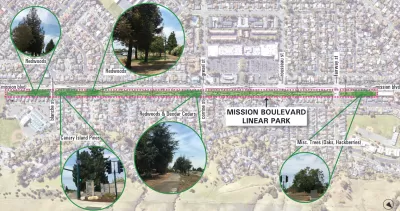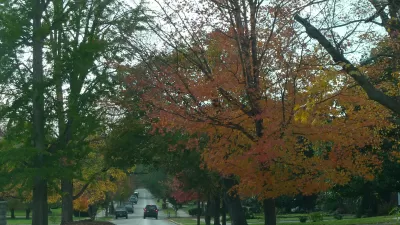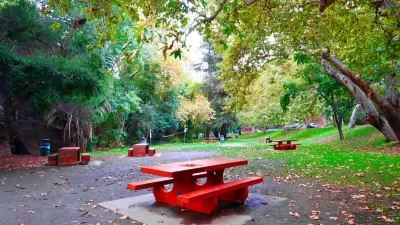Even as the role of parks and urban green space in public and ecological health becomes more apparent, city budgets are hard-pressed to meet the costs of park construction and maintenance.

Writing in Bloomberg CityLab, Patrick Sisson describes the innovative ways some cities have employed to build new public parks under extremely low budgets. In Hayward, California, cost-cutting measures for a mile-long linear park included “using native plants like oleander and scavenging materials from construction waste and other urban cast-offs.”
Yet low budgets don’t reflect the importance of parks as a civic amenity. “The need for more parks and green space access nationwide comes as new research confirms the mental and physical health benefits of outdoor recreation, and climate change brings additional shading and cooling demands. Park equity gaps are especially pronounced in low-income urban as well as rural areas, with neighborhoods that are predominantly people of color and in low-income areas having roughly 40% less access to green space.”
“To quickly add public park space on a tight budget, the Trust for Public Land and others recommend looking for underutilized municipal land. Urban school playgrounds, typically covered in asphalt and fenced off from the community, can be transformed into broadly accessible green spaces and public parks.”
Another option for boosting accessible green space is the concept of privately operated public spaces, or POPS, which mandate the construction of publicly accessible open and green spaces in exchange for exceptions on regulations or development bonuses. But the article notes that in reality, in New York City, such spaces “make up a large fraction of city green space but are often inaccessible or poorly maintained.”
Sisson points out that “As the understanding of just how much value parks add to the urban landscape expands, city officials will need to be more nimble and creative to continue to realize these benefits as budgets become tighter.” For now, park budgets in many parts of the country do not meet the demand for new and improved green spaces.
FULL STORY: The Quest for the Low-Budget Park

Planetizen Federal Action Tracker
A weekly monitor of how Trump’s orders and actions are impacting planners and planning in America.

Maui's Vacation Rental Debate Turns Ugly
Verbal attacks, misinformation campaigns and fistfights plague a high-stakes debate to convert thousands of vacation rentals into long-term housing.

San Francisco Suspends Traffic Calming Amidst Record Deaths
Citing “a challenging fiscal landscape,” the city will cease the program on the heels of 42 traffic deaths, including 24 pedestrians.

Amtrak Rolls Out New Orleans to Alabama “Mardi Gras” Train
The new service will operate morning and evening departures between Mobile and New Orleans.

The Subversive Car-Free Guide to Trump's Great American Road Trip
Car-free ways to access Chicagoland’s best tourist attractions.

San Antonio and Austin are Fusing Into one Massive Megaregion
The region spanning the two central Texas cities is growing fast, posing challenges for local infrastructure and water supplies.
Urban Design for Planners 1: Software Tools
This six-course series explores essential urban design concepts using open source software and equips planners with the tools they need to participate fully in the urban design process.
Planning for Universal Design
Learn the tools for implementing Universal Design in planning regulations.
Heyer Gruel & Associates PA
JM Goldson LLC
Custer County Colorado
City of Camden Redevelopment Agency
City of Astoria
Transportation Research & Education Center (TREC) at Portland State University
Jefferson Parish Government
Camden Redevelopment Agency
City of Claremont





























